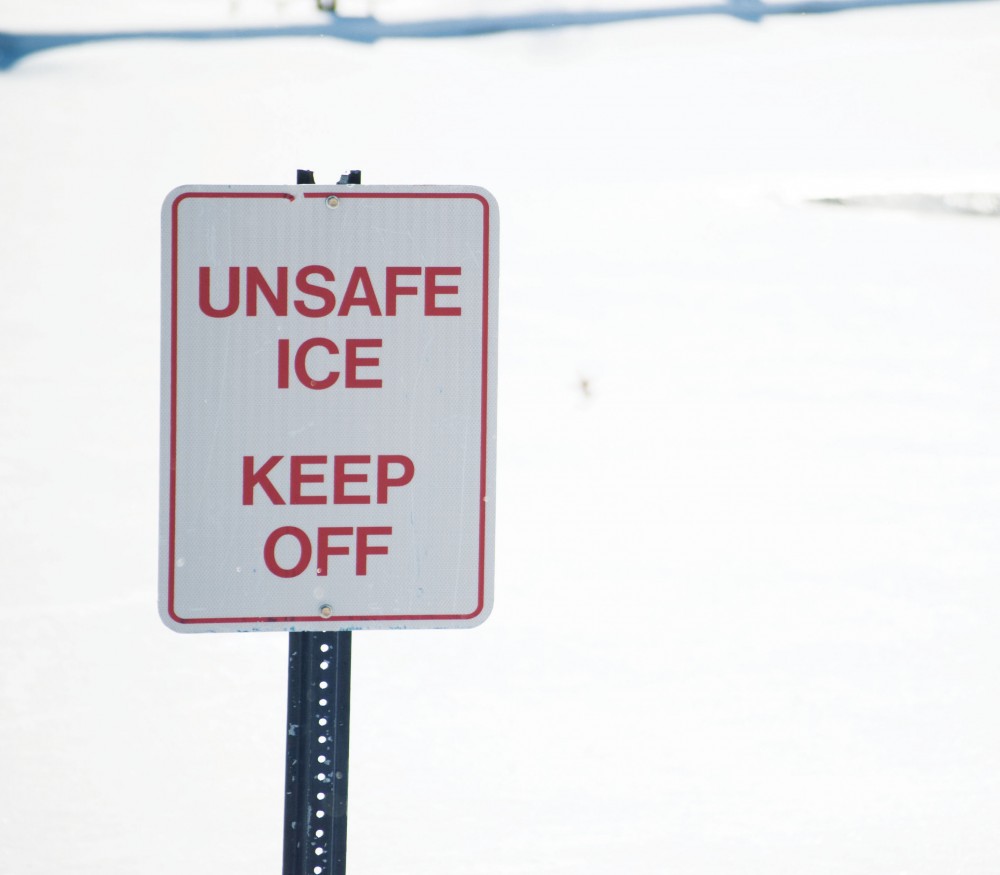GVSU Health Center prepares to help those who slip and fall on icy sidewalks during winter season

GVL/Archive – The Zumberge pond freezes over on Tuesday, Jan. 12, 2016 on Grand Valley’s Allendale campus. Facilities places a warning sign in front of the pond.
Dec 12, 2016
Snow has begun to fall from light grey clouds, covering fields, trees and Grand Valley State University buildings. It has also blanketed the roads and sidewalks, forming a disaster waiting to happen beneath: icy sidewalks.
Sidewalks covered in ice can be a student’s worst winter time fear. As they walk from class to class weary of where they tread, one wrong move can send them into the health center with painful injuries.
If one falls on campus at GVSU, they have the benefit of the Campus Health Center being available if a fall turns out to be more than just a small bump or bruise.
“If someone comes in with pain in their extremities, we’ll look at them and see if they need an x-ray,” said Heather Veronie, a physician’s assistant at the health center. “If they need one, we order an x-ray and see what’s wrong.”
For slips and falls on campus, especially around the winter time, the health center offers treatments for anything from bruises to minor sprains. If something is more severe, the affected person is usually sent to the emergency room for further treatment.
Veroni said the health center sees about one person a week who tripped and fell and had more than just a few bruises and hurt pride. Those injuries are usually sprained knees or wrists.
“It’s natural human reaction to catch yourself and that can sometimes hyperextend the wrist,” Veronie said.
Even without ice covering sidewalks, students can still be prone to injuries while walking on campus. In late November 2015, GVSU student Hannah Burt was walking to class when she was struck from behind by someone riding a longboard who had misjudged Burt’s course.
“He said he thought I was moving out of his way,” Burt said. “I got no apology.”
She got up from the collision with slight pain in her ankle, but shrugged it off and continued on toward her lab.
Burt says that by the time she got up to her lab on a third floor, her ankle really hurt and her shoes and the lower part of her jeans were soaked with blood.
“I told my professor I wasn’t going to be able to go to class and he looked at it and called campus security,” Burt said.
Burt then recounts campus security taking her over to the health center where she received six stitches.
“(The health center said) if it were any deeper, it would have severed my achilles tendon,” she said.
Throughout the winter months, the Campus Health Center will continue to prepare for additional ice-related injuries.

























